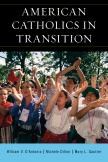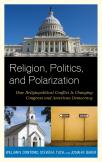Who Stands Where
Rowman & Littlefield. 216p $27.95
Rowman & Littlefield. 172p $28
Considerable debate is taking place throughout the Catholic world over whether and how church practices, teachings and organizational infrastructure should change in response to new social norms and needs. As reported recently in The National Catholic Reporter, the Vatican has asked bishops across the globe to distribute questionnaires to church members to get a sense of public opinion in the pew in advance of a synod scheduled for October 2014. The questions in the Vatican survey cover a wide range of timely and potentially sensitive subjects, including same-sex marriage, contraception and divorce. How well known and accepted are current Catholic teachings? What forms of pastoral care and guidance are now most needed?
This ambitious data-gathering initiative is commendable. After all, church leaders need to be informed about the religious dispositions of the flock. Fortunately, thanks largely to the extensive survey research that William D’Antonio and his colleagues have done over the last 25 years, much is already known in the United States about the nuances of Catholic identity and commitment, acceptance of traditional church positions, views on religious authority and hierarchy and participation in local parish affairs. American Catholics in Transition draws from this rich set of surveys to identify patterns of stability and change in the Catholic mind-set since the 1980s. Catholic leaders and rank-and-file members alike could learn much from this book about the internal life of the church. Readers who are not Catholic but wish to know more about the makeup and trajectory of the largest religious denomination in the country will also find the discussion accessible.
The first chapter of American Catholics in Transition discusses the practice of Catholicism in the days before the historic Second Vatican Council. Catholics who were born before 1940, and thus came of age in the pre-Vatican II period, serve as the baseline for exploring changes in the attitudes and activities of church members in subsequent generations.
Through several analytical chapters, D’Antonio, Dillon and Gautier highlight two central dynamics within the church. The first is the ascendance of the post-Vatican II cohort and the millennials. Compared with Catholics in the earlier era, younger church members are significantly more likely to rely on their individual conscience when deciding what is morally right with respect to contraception, abortion, same-sex relationships and divorce. Many Catholics today report being “spiritual but not religious” and integrate non-Catholic practices like yoga meditation into their spiritual lives. The relation of women to the church has also changed over time. In the pre-Vatican II period, women were much more engaged than men in the life of the church. Today, this gender gap has largely disappeared.
The second major dynamic has been the incorporation of unprecedented numbers of Latino immigrants into the church. In the 1980s, Latinos accounted for one-tenth of American Catholics. Today they constitute more than one-third. In general, the surveys indicate that Latinos tend to be more devout than non-Latinos and more deferential to church authority. This is especially true of younger Latino women. To an extent, these views represent a throwback to Catholic practices in the 1950s. “Ironically,” the authors write, “the deep-seated Catholic commitment exemplified in the steadfast attitudes and practices of pre-Vatican II American Catholics will not be carried on by their ethnic great-granddaughters but by the new cohorts of young Hispanic women who are remaking American Catholicism as their own.”
The authors are careful to emphasize which beliefs have remained largely consistent throughout this time of major generational and demographic change. Although most Catholics in the United States do not see a commitment to priestly celibacy or opposition to same-sex marriage and birth control as very important aspects of their religious faith, there is widespread agreement on certain core tenets of theological belief: the Resurrection, the special status of Mary as the mother of God and the obligation to aid the poor. In an era of growing divisiveness over policy issues and church governance, this finding will no doubt be reassuring to American Catholics of all generations and ethnic backgrounds.
D’Antonio, Steven A. Tuch and Josiah R. Baker take up the subject of divisiveness again from a different angle in Religion, Politics, and Polarization: How Religiopolitical Conflict Is Changing Congress and American Democracy. Over the last several decades, party politics in the U.S. has become far more polarized in comparison with the post-war period. Indeed, analysis of congressional roll call votes conducted by the political scientists Keith Poole and Howard Rosenthal indicates that the 112th Congress (2011–13) was more divided along party lines than any previous Congress since the 1800s. D’Antonio, Tuch and Baker demonstrate that this polarization has a religious dimension. Since the 1950s, the number of congressional members affiliated with mainline Protestant denominations—denominations that tend to be moderate or somewhat liberal, including the Episcopalians and Presbyterians—has declined. The number of Catholic lawmakers has increased, as has the number of Protestants from conservative denominations or nondenominational churches. These trends have contributed to ideological sorting in Congress on issues concerning healthcare, abortion, defense, taxes, welfare and the environment, among other legislative topics.
Statistically minded readers will get a clear sense of the unique impact of religious affiliations on congressional decision-making in the multivariate regression models in Chapter 6. Here the authors assess the factors that have influenced liberal or conservative voting records in the House and Senate since the 1970s. After controlling for the effects of partisanship and various characteristics of the lawmakers’ constituencies, religious identifications make a significant difference in legislative behavior.
The central takeaway from Religion, Politics, and Polarization is that the organizational cultures of the two major parties in the United States draw from distinct religious traditions—a mainline Protestant tradition emphasizing personal autonomy and individualism in the case of the Republicans and an Abrahamic tradition of “welcoming strangers” and showing compassion for the poor for Democrats. These religious orientations are not static, however. Most striking have been the cultural shifts within the Republican Party, where a conservative orthodoxy is now dominant.
These two books underscore the significance of religion as a central force in U.S. politics and society. At the same time, William D’Antonio and his coauthors make it abundantly clear that religious beliefs and practices are continually works-in-progress. The emergence of fresh social issues, the coming of age of new generations and the strategic decisions of political parties in a liberal democracy all shape the expression and meaning of religion in a given era.
This article also appeared in print, under the headline “Who Stands Where,” in the March 3, 2014, issue.









